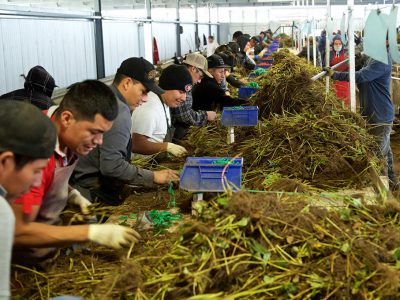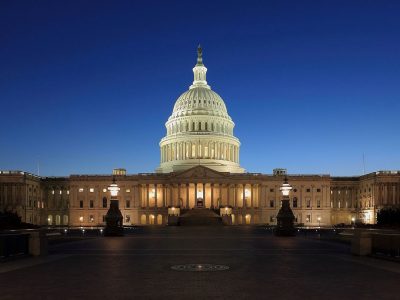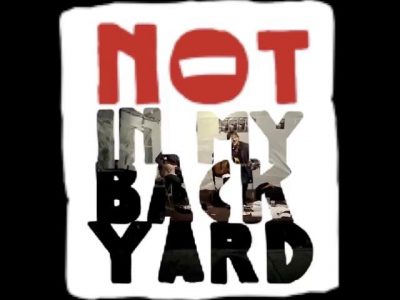The $25 Million Question: How Sonoma County Can Spend Vegetation Management Funds to Bolster Wildfire Resilience
by Ethan Elkind, Ted Lamm, & Katie Segal
How would you spend $25 million to reduce the risk of catastrophic wildfire through vegetation management? Sonoma County leaders found themselves facing this question and enlisted UC Berkeley School of Law’s Center for Law, Energy and the Environment (CLEE) for help. Today, CLEE is releasing a report with specific recommendations for Sonoma County, which we hope can serve as a model for other local and state governments and community groups as they work to address ...
CONTINUE READINGThe Nondelegation Doctrine and Its Threat to Environmental Law
Here’s what the doctrine means and why it has suddenly become so significant.
If you ask Supreme Court experts what keeps them up at night, the answer is likely to be the non-delegation doctrine. If you are among the 99.9% of Americans who've never heard of it, here’s an explainer of the doctrine and what the 6-3 Court might do with it. What’s the nondelegation doctrine? Simply put, the doctrine says that only the legislature can create new rules of law and that Congress cannot transfer this power to the executive branch or the judiciary...
CONTINUE READINGA Preview: Major Property Rights Case Currently Before U.S. Supreme Court
Decision in Cedar Point Nursery Could Imperil Key Health, Safety & Environmental Programs
On Monday, the U.S. Supreme Court will hear oral arguments in a major property rights case from California: Cedar Point Nursery v. Hassid. That litigation arises in a labor law context. But, depending on how the Court rules, the case could have major, deleterious impacts on a wide array of health, safety and environmental programs. Cedar Point involves an agricultural industry challenge to a longstanding regulation enacted by California's Agricultural Labor Re...
CONTINUE READINGWhen “Stay In Your Lane” Is Wrong
Technical policy questions often involve ethical political questions that the public must have a say in
As vaccination for the coronavirus in the United States ramps up, I want to take a look back to a policy dispute over the initial plans for vaccine distribution at the end of 2020 and the beginning of 2021 – in part because that fight (like “follow the science,” which I blogged about recently) also reveals some underlying principles in environmental law specifically, and in the use of law and science more broadly. As the initial vaccine distribution plans were b...
CONTINUE READINGThe Kolbert Report
Elizabeth Kolbert's new book asks what it means to protect nature in the Anthropocene.
Elizabeth Kolbert’s new book, Under a White Sky, opens with the story of the battle to keep invasive Asian carp out of the Great Lakes. The problem exists because of two earlier interventions with nature. A century ago, we reversed the flow of the Chicago river to keep the city’s pollutants out of Lake Michigan by sending them down the Mississippi. Later, Asian carp were brought to the U.S. as a way of controlling aquatic weeds and algae in sanitation treatment p...
CONTINUE READINGDeconstructing the Supreme Court’s First Environmental Law Decision of the Year (Sort Of)…
...And Newly-Arrived Justice Barrett's First Majority Opinion
Earlier this month, the U.S. Supreme Court issued its first environmental law-related decision of its current Term--U.S. Fish and Wildlife Service v. Sierra Club. I say "environmental law-related" because the heart of the case concerns whether certain federal government documents are disclosable to the public under the Freedom of Information Act (FOIA). But the case arises in the context of the federal Endangered Species Act (ESA), and for that reason it's import...
CONTINUE READINGThe U.S. Government Is Researching Solar Geoengineering. Now What?
Officials should use the tools on hand to get governance right.
In December, Congress renewed funding for the National Oceanic and Atmospheric Administration (NOAA) to investigate stratospheric aerosols as a potential method for "solar climate interventions," expanding a research program established a year earlier. These actions have been widely interpreted as the first-ever federal research project into solar geoengineering—proposals to slightly “dim the sun” to limit the harms of climate change. I recently published a ...
CONTINUE READING“NIABYs” Obstruct Important Climate Change Research
Some activists say "not in my backyard," but strident opponents of solar geoengineering argue "not in anyone's backyard."
A peculiar type of activism is manifesting with regard to solar geoengineering. This proposed set of technologies to reduce climate change has been subject to only a few outdoor experiments. One has been in the pipeline for almost a decade: The Stratospheric Controlled Perturbation Experiment (SCoPEx) would involve the launch of a balloon into the stratosphere, where it would move horizontally, spray one or more fine mists, and then circle back to measure chemical and ph...
CONTINUE READINGIf Liberals Were the Ones Who Favored Fossil Fuels. . .
Here’s what the conservative response might look like.
Conservatives often come to the defense of fossil fuels and disdain renewable energy. Is that really consistent with their principles? Let’s imagine what conservatives might say if the table were turned, Suppose liberals proposed government support for fossil fuels. The conservative response might look something like this: Another Liberal Boondoggle Now they want to prop up fossil fuels! Sen. Ted Cotton As if our budget deficit wasn’t bad enough under...
CONTINUE READINGKeeping It All In the Ground?
Exploring legal options for congressional and executive actions to terminate existing fossil fuel leases on federal lands.
The Biden Administration has set aggressive goals for the reduction of greenhouse gas emissions from the United States. And a necessary component for any long-term plan to address greenhouse gas emissions from the United States is reducing and ultimately eliminating the emissions from fossil fuels produced on federal lands. Why is this such a critical issue? Almost half of the coal mined in the United States, about a quarter of the oil, and around one-sixth of the n...
CONTINUE READING










